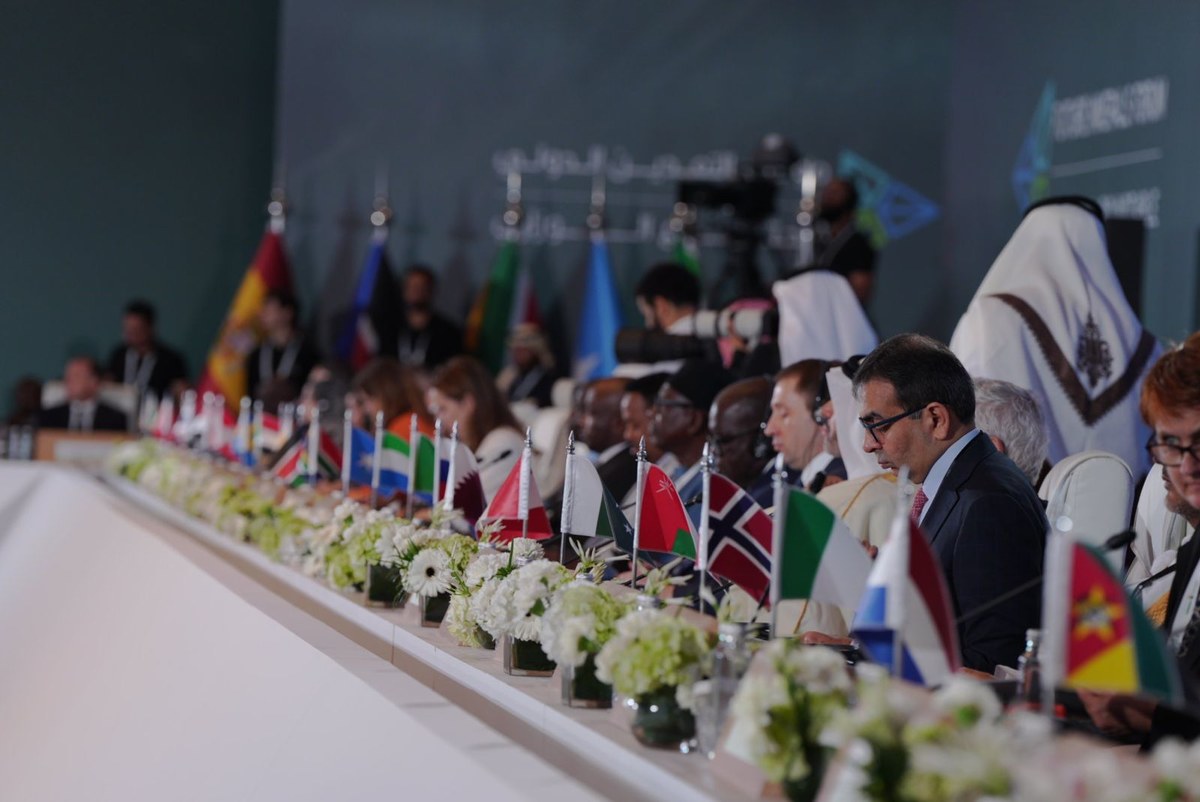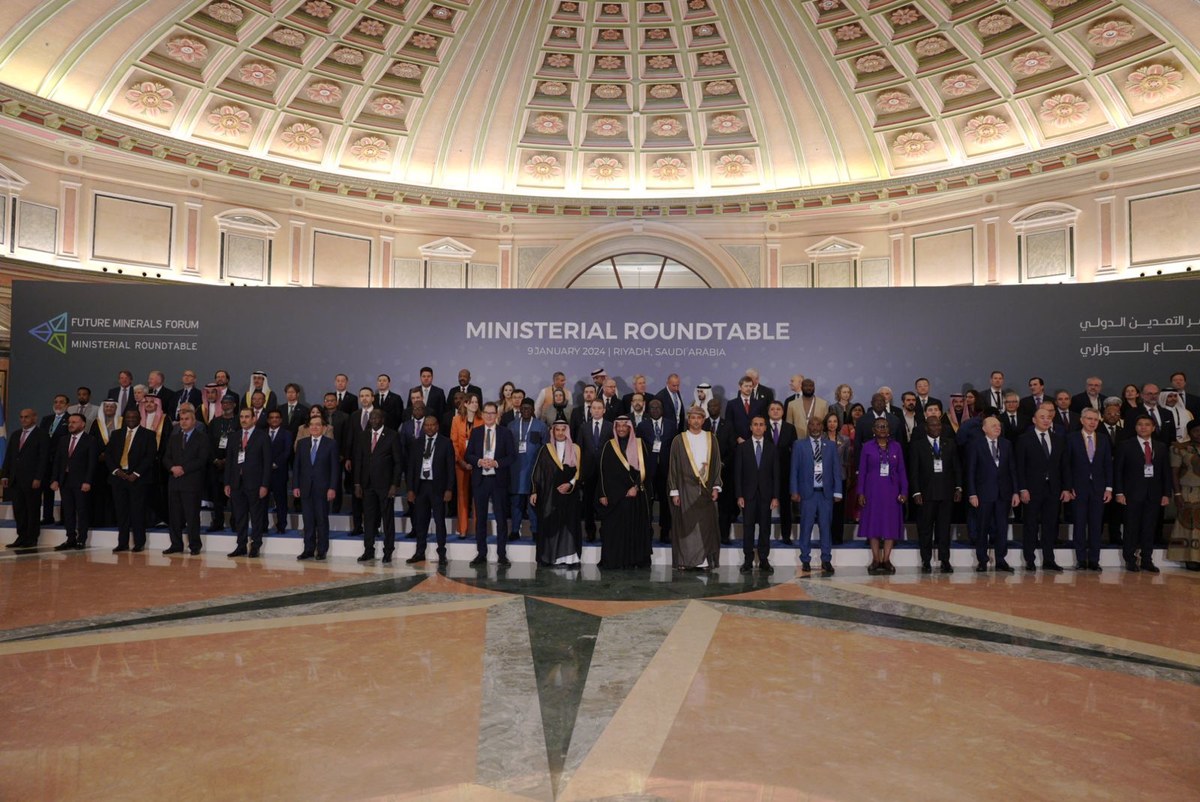RIYADH: Plans for a new mineral innovation acceleration park in Saudi Arabia were revealed at a global policymakers’ meeting in Riyadh, held as part of a three-day event focused on the industry.
Speaking during the opening remarks of the Future Minerals Forum’s ministerial roundtable, the Kingdom’s minister of industry said the project signaled Saudi Arabia’s intention to make good on pledges to deliver sustainable energy.
Bandar Alkhorayef – also responsible for mineral resources in the Kingdom – made the comments in front of ministers from more than 77 countries, as well as representatives from the EU and UN.
“I am proud to announce today the creation of a mineral innovation acceleration park. A partnership between King Abdulaziz City for Science and Technology, the Ministry of Industry and Mineral Resources, the National Industrial and Logistics Program and the Saudi Geological Survey,” the minister said.
He added: “This tangible step in creating the regional network of centers of excellence signals our commitment to deliver on our goals. We invite you to consider how your countries can contribute to this effort. In driving other initiatives forward, we must now focus on implementation.”
Alkhorayef expressed his pride in the collective accomplishments resulting from previous discussions, emphasizing the confidence in the ability to continue building on these successes.
He then highlighted the current opportunity to advance on the consensus of the four initiatives that were agreed upon during last year’s forum.
“These initiatives are developing a critical mineral framework for the super region, setting regional expectations for responsible critical mineral supply, building capacity through centers of excellence and creating regional green metal hubs supported by technology,” the minister stated.
Referring to discussion held during the 2023 UN climate change conference in Dubai, known as COP28, on a global commitment to achieve the net zero targets outlined in the Paris Agreement, Alkhorayef stated that the focus is on the move to cleaner energy, emphasizing the need for urgent actions from everyone involved.
“We must all contribute to solve the challenge we face in creating more sustainable, resilient value chains that will produce and supply the minerals for the world’s energy transition,” the minister said.
He added: “Together we can maximize the potential of supplying countries to help the world achieve its future ambitions as today is a golden opportunity to continue with excellence progress.”
On the sidelines of the high-level meeting, Alkhorayef noted in a press statement that there is a consensus with countries that require minerals for their industries to activate a set of initiatives.
“The most important of which is drawing a clear policy on how to define sustainable mining that serves the interests of communities, preserves the environment, and at the same time provides minerals,” he continued.
The minister also noted that the new mining investment system is one of the best in the world in terms of transparency, clarity and speed in obtaining the necessary licenses.
This comes as the Kingdom’s strategic geographical location positions it as a significant hub with diverse capabilities in the sector.

Additionally, Alkhorayef emphasized the collective capability to maximize the potential of supplier countries in assisting the world in achieving its future goals.
The minister also stressed the importance of leveraging the mineral supply chain to bring about social and economic prosperity in local communities, both within the super region and globally.
“Here, in Saudi Arabia, as part of the investments we have made in shaping our own national mineral strategy, we have succeeded in creating positive, social and economic impact for minerals,” he explained.
Reflecting on the Kingdom’s commitment for shaping the future of minerals, Alkhorayef underscored that there might be areas of agreement and disagreement, but added: “When the world looks at where global action on minerals is formulated, they look to us because this is the only true global forum for shaping the future of minerals.
“We have a global commitment. We have a momentum, and our topics are resonating with governments and stakeholders everywhere.”
Furthermore, the minister stated that in Saudi Arabia, through the investments made to formulate the national mineral strategy, the government has managed to generate favorable social and economic effects related to minerals.
Khalid Al-Mudaifer, vice minister for mining affairs, underscored the importance of cooperation between countries, governments and experts in the mining sector, as the Kingdom’s ultimate goal is to support supply chains by focusing on increasing investment and building capabilities.
“Until now, 75 percent of exploration spending is still spent in five countries only. We have made remarkable progress and taken major steps in a number of initiatives, and we still have a lot to do,” he said during the closing remarks of the meeting.
The vice-minister added: “We will build a practical framework for minerals in order to develop policies and accelerate exploration and extraction operations. We are on the verge of a new era in the mining and metals industry sector.”

The roundtable underscores the significant contribution of the region spanning from Africa to West and Central Asia, highlighting Saudi Arabia’s leadership role.
The world’s premier gathering on minerals seeks to address the challenges in the mining and metals sector, especially the heightened demand for energy transition minerals.
This high-level meeting, preceding the third edition of the Future Minerals Forum, will see participation from over 80 countries, featuring over 45 ministers and representatives from 20 international organizations, 30 nongovernmental organizations, and 13 business associations.
As nations rush to ensure stable supply chains, collaborative efforts will take center stage, with a key focus on supporting technology development.
The spotlight will be on promoting a green mineral supply chain, leveraging reliable hydrogen and renewable energy sources to power this transformative journey.
The event is not just a platform for discussion but a beacon for global cooperation in the production of critical minerals essential for transforming the energy sector.
Key discussions will revolve around the potential of the major mineral-rich super region, with government representatives and officials from multilateral organizations like the UN and the World Bank, alongside trade and business associations, exchanging ideas and experiences.



























